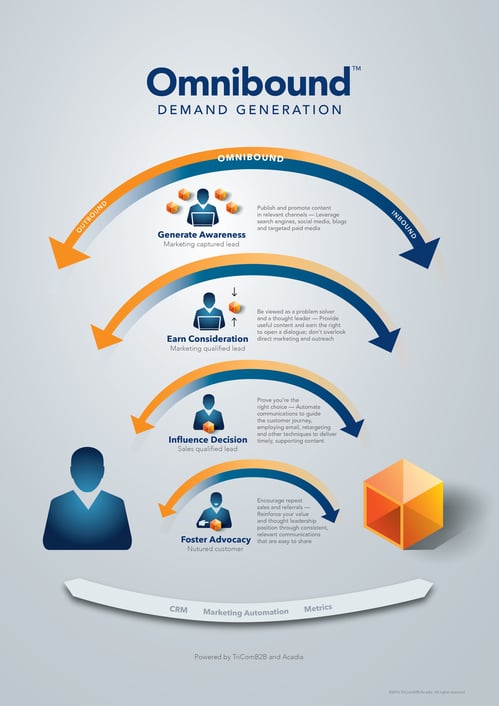Inbound? Outbound? What do they mean? How can they impact sales lead and demand generation? Keep reading.
As you may know, inbound marketing involves pulling people to you via your website, relevant offers (think ebooks or webinars) or calls to action for demos or consultations. HubSpot defines inbound as "publishing the right content in the right place at the right time." Yes - it's the way many of us shop today- be it B2B or B2C. Google is our friend! Did you know that most buyers in the B2B space are 70% of the way down the sales funnel, often times anonymously, before we even know they're looking? Thankfully, technology can help eliminate that anonymity.
Outbound marketing is looking for people who are most likely interested in what you have to offer. It includes traditional outreach such as direct mail, trade shows, phone calls and networking events. The "H2H" (Human to Human) factor is still required, but we have to be smarter about targeting the right people at the right time.
But why choose just inbound or outbound. In the B2B world, they're inextricably linked. The development of the strategy and process that is right for your business is the key. No company, campaign or program is alike, but elements of inbound and outbound marketing can increase demand generation more effectively than one or the other.
Finding a single organization that understands this and can execute the entire cycle, from marketing lead to an actual sale and everything in between, has been virtually impossible. So we're here to announce a process, and it’s called Omnibound™.
Omnibound integrates strategic content marketing approaches with inbound and outbound lead capture and qualification.

The four steps of Omnibound:
- Generate awareness. Publish and promote content in relevant channels.
- Earn consideration. Be viewed as a problem solver and a thought leader.
- Influence decision. Prove you're the right choice.
- Foster advocacy. Encourage repeat sales and referrals.
So what do you think? If you're ready to talk or have any questions, click below.







Comments